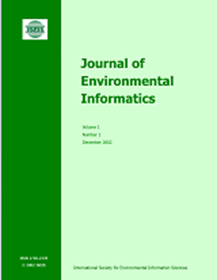Regulation and management of lake eutrophication in urban regions based on an improved model for aquatic ecosystem simulations
IF 5.4
1区 环境科学与生态学
Q1 ENVIRONMENTAL SCIENCES
引用次数: 0
Abstract
The construction of a model based on an analytic system and dynamic structure is an important technique in lake manage-ment. The Yan-Model conducts system simulations based on the dynamics of the main aquatic species but does not include filter-feeding fish and N elements, which have important effects on eutrophication. Based on the Yan-Model, modules for the filter-feeding fish A. nobilis and the N cycle were constructed and combined to form a new model, the Yan-Model II. After model calibration and validation, a scenario analysis was performed to simulate eutrophication regulation and external pollution impacts. The results show the following: (1) the simulated and measured values of the lake ecosystem were highly consistent (R > 0.9, RSR < 0.7); (2) an eutrophic lake could be effectively restored by planting Vallisneria natans (Lour.) Hara with low biomass density; (3) assuming that urban sewage drained into the lake, equal or more than 600 m3 of urban sewage would lead to an increase in the Chl-a concentration to a level that exceeded the eutrophication threshold; and (4) an Aristichthys nobilis density of 50 g/m3 had a strong ability to control phytoplankton growth. Using the improved model, this study successfully guided the ecological restoration of Dongshan Lake. This model can be used for lake management and sustainable development in urban ecosystems.基于改进水生态系统模拟模型的城市湖泊富营养化调控与管理
基于分析系统和动态结构的模型构建是湖泊管理的一项重要技术。yan模型基于主要水生物种的动态进行系统模拟,但不包括对富营养化有重要影响的滤食性鱼类和N元素。在yan模型的基础上,构建了滤食性nobilis鱼和N循环的模型,并将其组合为yan -模型II。在模型校正和验证后,进行情景分析,模拟富营养化调控和外部污染影响。结果表明:(1)湖泊生态系统模拟值与实测值高度一致(R > 0.9, RSR < 0.7);(2)种植水草可有效恢复富营养化湖泊。原草生物量密度低;(3)假设城市污水排入湖泊,等于或大于600 m3的城市污水将导致Chl-a浓度增加到超过富营养化阈值的水平;(4)鳙鱼密度为50 g/m3时,对浮游植物的抑制能力较强。利用改进后的模型,成功地指导了东山湖的生态恢复。该模型可用于湖泊管理和城市生态系统的可持续发展。
本文章由计算机程序翻译,如有差异,请以英文原文为准。
求助全文
约1分钟内获得全文
求助全文
来源期刊

Journal of Environmental Informatics
ENVIRONMENTAL SCIENCES-
CiteScore
12.40
自引率
2.90%
发文量
7
审稿时长
24 months
期刊介绍:
Journal of Environmental Informatics (JEI) is an international, peer-reviewed, and interdisciplinary publication designed to foster research innovation and discovery on basic science and information technology for addressing various environmental problems. The journal aims to motivate and enhance the integration of science and technology to help develop sustainable solutions that are consensus-oriented, risk-informed, scientifically-based and cost-effective. JEI serves researchers, educators and practitioners who are interested in theoretical and/or applied aspects of environmental science, regardless of disciplinary boundaries. The topics addressed by the journal include:
- Planning of energy, environmental and ecological management systems
- Simulation, optimization and Environmental decision support
- Environmental geomatics - GIS, RS and other spatial information technologies
- Informatics for environmental chemistry and biochemistry
- Environmental applications of functional materials
- Environmental phenomena at atomic, molecular and macromolecular scales
- Modeling of chemical, biological and environmental processes
- Modeling of biotechnological systems for enhanced pollution mitigation
- Computer graphics and visualization for environmental decision support
- Artificial intelligence and expert systems for environmental applications
- Environmental statistics and risk analysis
- Climate modeling, downscaling, impact assessment, and adaptation planning
- Other areas of environmental systems science and information technology.
 求助内容:
求助内容: 应助结果提醒方式:
应助结果提醒方式:


